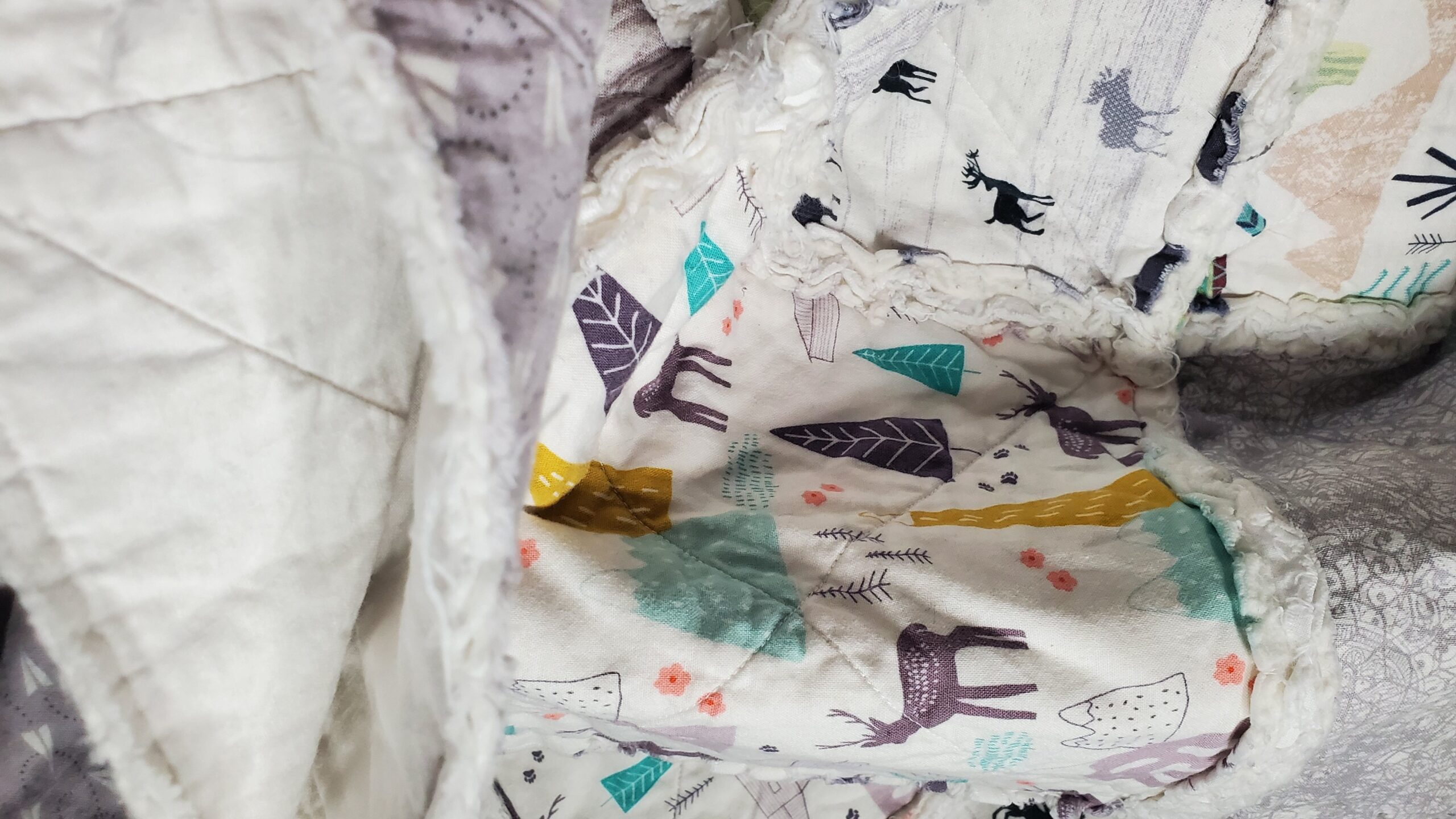Rag quilts are a unique type of quilt that has been around for decades. They are characterized by their frayed edges, giving them a distinct look that is both rustic and charming. Given the size flexibility of each square, rag quilts are also a great way to showcase your favorite fabrics!
If you’re a fan of this type of quilt or just interested in learning more about them, then read on. In this blog post, we will explore the history of rag quilts, from their humble beginnings to their popularity today.

History of Rag Quilts
The exact origins of rag quilts are not well known, but it is believed that they were first created by pioneers and settlers in the late 1800s. These pioneers used scraps of fabric and old clothing to create warm, cozy blankets for their families. The frayed edges of the quilt provided extra insulation, making them perfect for cold winter nights.
As time went on, rag quilts became more popular and were made using a wider variety of materials. In the early 1900s, rag quilts were often made from wool or flannel, which were readily available at the time. These quilts were often made using a simple square or rectangular patchwork design.
During the Great Depression of the 1930s, rag quilts became even more popular due to their affordability. Many families could not afford to buy new blankets or quilts, so they made their own using scraps of fabric and old clothing. Rag quilts were an economical way to keep warm and were often made using whatever materials were available.
In the 1960s and 1970s, rag quilts experienced a resurgence in popularity. This was due in part to the hippie movement, which embraced a back-to-nature aesthetic. Rag quilts, with their rustic look and natural materials, were a perfect fit for this style.
Today, rag quilts are still popular and can be found in a variety of styles and designs. Some quilters use traditional patchwork designs, while others create more modern and abstract patterns. Rag quilts are often made using flannel or cotton fabrics, although other materials such as denim or fleece can also be used.
How to Make a Rag Quilt
If you’re interested in making a rag quilt, there are a few things you should know. First, rag quilts are made using a layer of batting in between the front and back layers. This batting provides extra warmth and insulation. Second, the edges of the quilt are left raw and allowed to fray, giving the quilt its characteristic look.
To make a rag quilt, you’ll need:
- Fabric for the front, back, and batting layers
- A rotary cutter and mat
- Quilting ruler
- Sewing machine and thread
- Scissors
To start, cut your fabric into squares or rectangles of equal size. The size of the squares will determine the size of your finished quilt. I tend to use 10″ squares to that I can purchase many of the fabrics as pre-cuts. When I order the standard, 10″ precuts, I am able to save myself a LOT of cutting and potential hand soreness!
Next, layer your fabric squares together, placing the batting in between the front and back layers. Pin the layers together and then sew an “X” across each square to hold the layers in place. You can use your sewing machine’s walking foot for this part, but I usually skip this step.
Sew your squares into rows by sewing wrong sides together. This keeps the edges exposed on the front of your quilt.
Once all of your squares are sewn together, it’s time to create the frayed edges. Using your scissors, make small snips around the edges of each square. Be careful not to cut too close to the stitching or you may create a hole in the fabric.
Finally, wash and dry your quilt to encourage the edges to fray even more. The more you wash and dry your quilt, the more frayed and cozy it will become.
While rag quilts may have started as a practical way to use up scraps of fabric, they have evolved into a popular form of quilting. The versatility and unique texture of rag quilts have earned them a special place in the world of quilting. Whether you’re a seasoned quilter or just starting out, a rag quilt is a fun and satisfying project that can be personalized in endless ways.
So if you’re looking for a fun and unique quilting project, why not try making a rag quilt? With its history rooted in practicality and a modern twist on the traditional technique, a rag quilt is a wonderful way to celebrate the heritage of quilting while creating something truly special.
#RagQuilts, #QuiltingHistory, #QuiltingTraditions, #QuiltingHeritage, #HandmadeQuilts, #DIYQuilts, #QuiltingCommunity, #RagQuiltPatterns, #TextileHistory, #TextileArt, #RagQuilt
